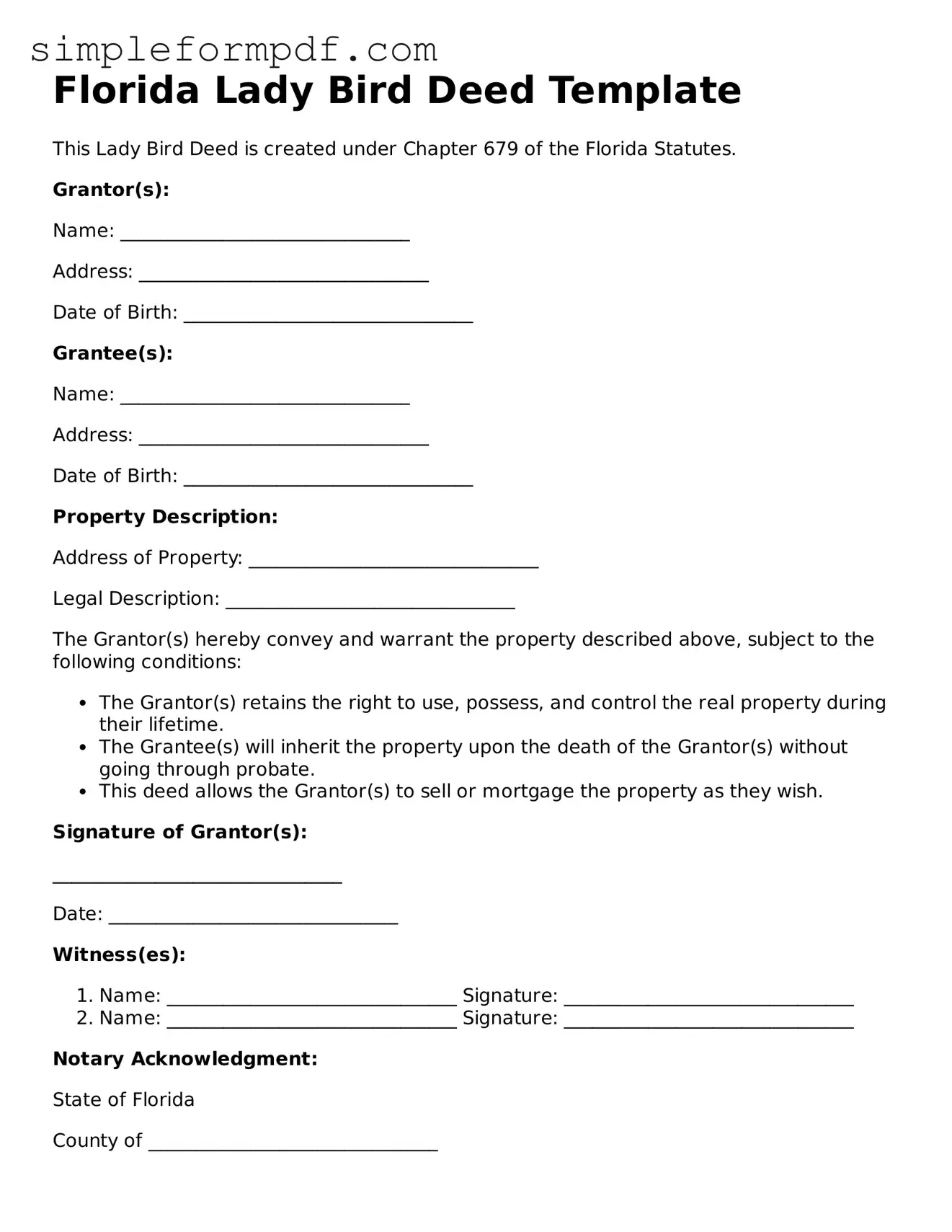Florida Lady Bird Deed Template
This Lady Bird Deed is created under Chapter 679 of the Florida Statutes.
Grantor(s):
Name: _______________________________
Address: _______________________________
Date of Birth: _______________________________
Grantee(s):
Name: _______________________________
Address: _______________________________
Date of Birth: _______________________________
Property Description:
Address of Property: _______________________________
Legal Description: _______________________________
The Grantor(s) hereby convey and warrant the property described above, subject to the following conditions:
- The Grantor(s) retains the right to use, possess, and control the real property during their lifetime.
- The Grantee(s) will inherit the property upon the death of the Grantor(s) without going through probate.
- This deed allows the Grantor(s) to sell or mortgage the property as they wish.
Signature of Grantor(s):
_______________________________
Date: _______________________________
Witness(es):
- Name: _______________________________ Signature: _______________________________
- Name: _______________________________ Signature: _______________________________
Notary Acknowledgment:
State of Florida
County of _______________________________
On this _____ day of ___________, 20___, before me, a Notary Public, personally appeared _______________________________, who is known to me (or proved to me on the basis of satisfactory evidence) to be the person whose name is subscribed to this instrument.
_______________________________
Notary Public
My commission expires: _______________________________
